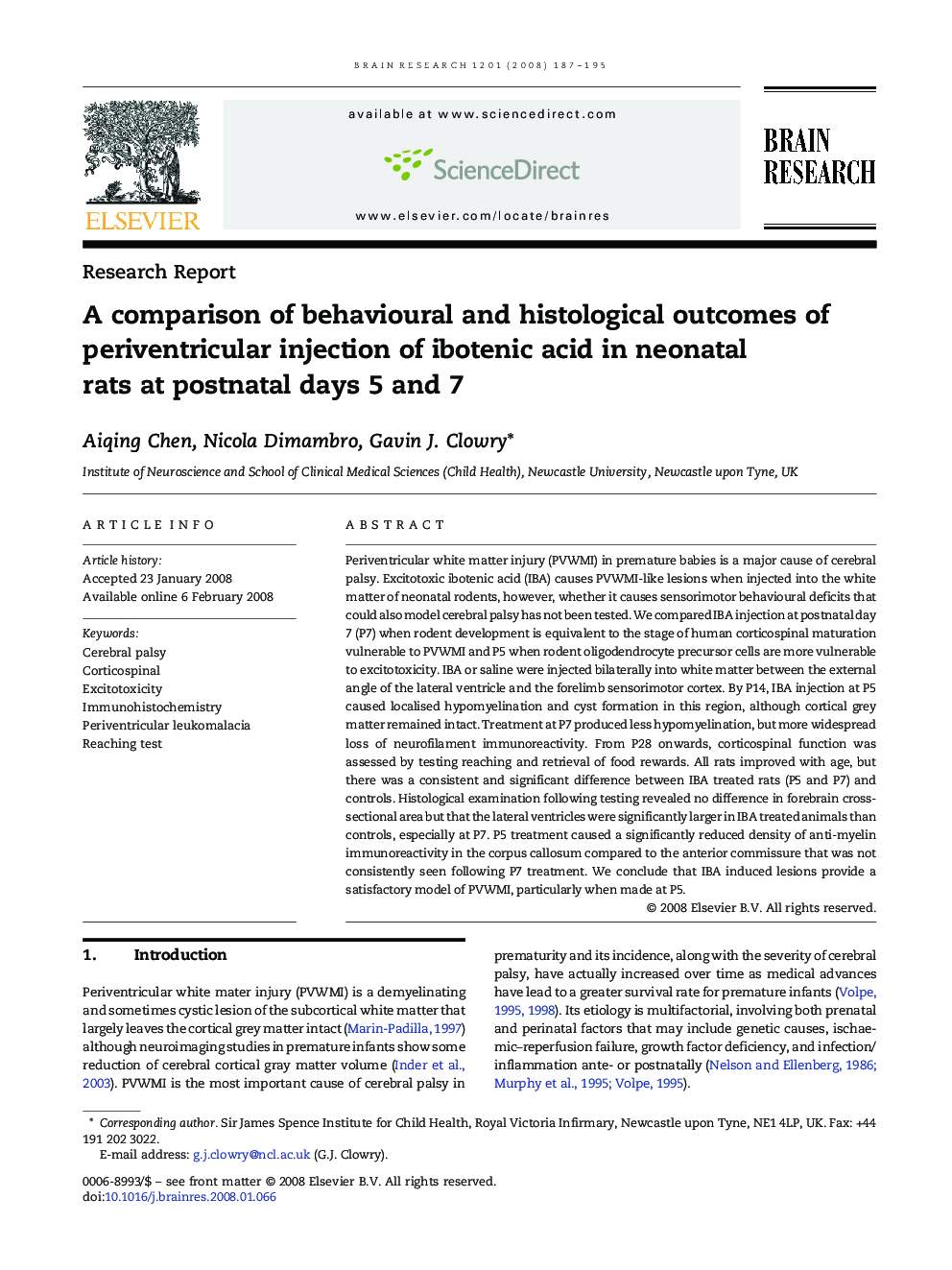| Article ID | Journal | Published Year | Pages | File Type |
|---|---|---|---|---|
| 4329941 | Brain Research | 2008 | 9 Pages |
Abstract
Periventricular white matter injury (PVWMI) in premature babies is a major cause of cerebral palsy. Excitotoxic ibotenic acid (IBA) causes PVWMI-like lesions when injected into the white matter of neonatal rodents, however, whether it causes sensorimotor behavioural deficits that could also model cerebral palsy has not been tested. We compared IBA injection at postnatal day 7 (P7) when rodent development is equivalent to the stage of human corticospinal maturation vulnerable to PVWMI and P5 when rodent oligodendrocyte precursor cells are more vulnerable to excitotoxicity. IBA or saline were injected bilaterally into white matter between the external angle of the lateral ventricle and the forelimb sensorimotor cortex. By P14, IBA injection at P5 caused localised hypomyelination and cyst formation in this region, although cortical grey matter remained intact. Treatment at P7 produced less hypomyelination, but more widespread loss of neurofilament immunoreactivity. From P28 onwards, corticospinal function was assessed by testing reaching and retrieval of food rewards. All rats improved with age, but there was a consistent and significant difference between IBA treated rats (P5 and P7) and controls. Histological examination following testing revealed no difference in forebrain cross-sectional area but that the lateral ventricles were significantly larger in IBA treated animals than controls, especially at P7. P5 treatment caused a significantly reduced density of anti-myelin immunoreactivity in the corpus callosum compared to the anterior commissure that was not consistently seen following P7 treatment. We conclude that IBA induced lesions provide a satisfactory model of PVWMI, particularly when made at P5.
Related Topics
Life Sciences
Neuroscience
Neuroscience (General)
Authors
Aiqing Chen, Nicola Dimambro, Gavin J. Clowry,
